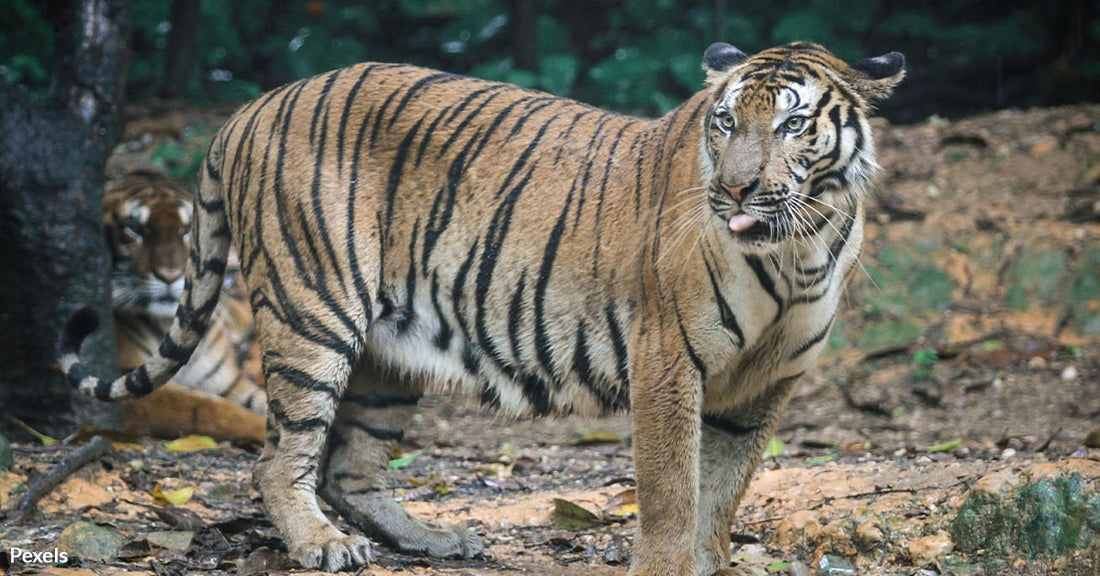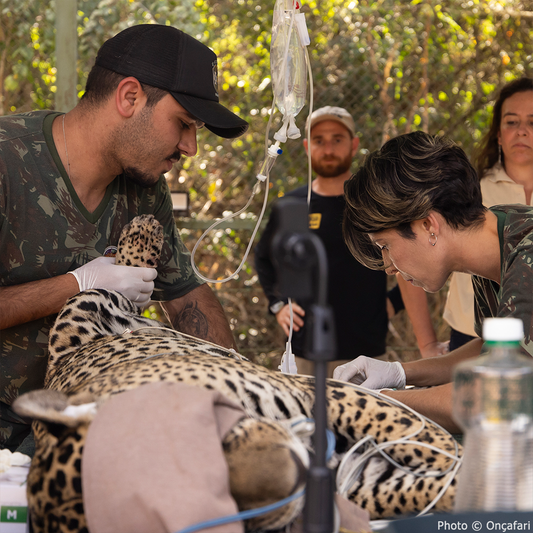Malaysia's National Symbol Teeters on Edge of Extinction
Matthew Russell
Photo: Pexels
In the dense jungles of Malaysia, a quiet battle is unfolding. The protagonist is the majestic Malayan tiger, a national symbol and ecological keystone.
Once numbering around 3,000 in the 1950s, fewer than 150 of these creatures now remain in the wild. Their rapid decline has prompted conservationists to sound the alarm, declaring the situation a national emergency.
Several factors are driving this decline, while efforts are in play to save the Malayan tiger.

Plummeting Numbers and Poaching Crisis
The decline of the Malayan tiger is stark and alarming. From 3,000 in the 1950s, the population has dwindled to under 150. Poaching is a primary driver. The lucrative illegal wildlife trade, valued at approximately $216 billion annually, has devastated tiger populations, with their bones, meat, and skins fetching high prices on the black market. Over the past decade, poaching has slashed the Malayan tiger population by 50% according to Malaysian Wildlife.
According to Mark Rayan Darmaraj, a Malaysian conservationist, the increase in poaching is a significant threat.
"Ten years ago, we found isolated incidences of snaring, but now hundreds of snares have been detected in our forests," he said. "Massive snaring by Indochinese poachers has the potential to wipe out large mammals within a relatively short period of time," he told Al Jazeera.

Deforestation and Habitat Fragmentation
Deforestation is another critical issue. As forests are cleared for agriculture, logging, and other land uses, tigers lose their habitat. This not only reduces their living space but also fragments their territory, isolating populations and making it harder for them to find mates and reproduce, according to Malaysian Wildlife.
Henry Chan, director of conservation at WWF Malaysia, emphasized the importance of habitat connectivity: "Maintaining habitat connectivity is crucial to prevent localized extinction and promote population recovery," Chan told CNN.
The Role of Political Will
Effective conservation requires strong political will and resource allocation. However, Malaysia's efforts have lagged behind other tiger-populated countries like India and Nepal. The difference lies in "substantial resource allocation and political will," Darmaraj noted in an interview with Al Jazeera.
While Malaysia has initiatives like the National Tiger Conservation Task Force and the Wildlife Conservation Act 2010, the implementation and enforcement of these measures need to be more robust.

Conservation Efforts and Initiatives
Several initiatives have shown promise. The Royal Malaysian Police and the Department of Wildlife and National Parks launched "Operasi Bersepadu Khazanah," which has yielded positive results. In 2021, 133 people were arrested under this initiative, and 303 snares were destroyed, reports Al Jazeera.
Additionally, the "Biodiversity Protection and Patrolling Programme" mobilizes hundreds of patrollers, including veteran army personnel and Indigenous people, to protect wildlife on the ground.
Chan also highlighted the need for advanced technology in conservation efforts: "Enhancing patrols in critical tiger habitats and leveraging advanced technology such as camera traps and drones for monitoring and surveillance" are crucial steps, Chan told CNN.
Ecological Impact of Tiger Extinction
The extinction of the Malayan tiger would have profound ecological consequences. As apex predators, tigers play a critical role in maintaining the balance of their ecosystems. Their disappearance would likely lead to an overpopulation of prey species like wild boar and deer, resulting in overgrazing and habitat degradation, according to Malaysian Wildlife.
This cascading effect could disrupt the entire ecosystem, affecting other species and vegetation. The reintroduction of wolves into Yellowstone National Park in the United States offers a glimpse of what might happen without apex predators. The wolves helped control the elk population, which had been overgrazing the park. Their presence brought about a healthier balance in the ecosystem overall.
Similarly, the loss of tigers could lead to a hyper-abundance of the next top predator, like leopards, further altering the food chain dynamics, as noted by Al Jazeera.

The Path Forward
Saving the Malayan tiger requires a multifaceted approach. Anti-poaching efforts need to be intensified, with increased funding and resources for enforcement. Habitat restoration and protection are equally crucial, necessitating innovative financing mechanisms and political commitment.
Strengthening wildlife laws and regulations can provide a legal framework to deter wildlife crimes, reports Malaysian Wildlife. Community involvement and public awareness are also vital. Grassroots initiatives and public campaigns can complement official conservation efforts.
As Darmaraj pointed out to Al Jazeera, "If we can't save our most iconic species, then what will the future hold for other wildlife in Malaysia?"
The fate of the Malayan tiger hangs in the balance. With fewer than 150 remaining in the wild, the clock is ticking. However, with concerted efforts from governments, NGOs, and civil society, there is still hope. The survival of this majestic creature depends on immediate action, substantial resources, and unwavering political will.
The question remains: are we willing to do what it takes to save the Malayan tiger?
Click below to take action!
Matthew Russell is a West Michigan native and with a background in journalism, data analysis, cartography and design thinking. He likes to learn new things and solve old problems whenever possible, and enjoys bicycling, spending time with his daughters, and coffee.




















